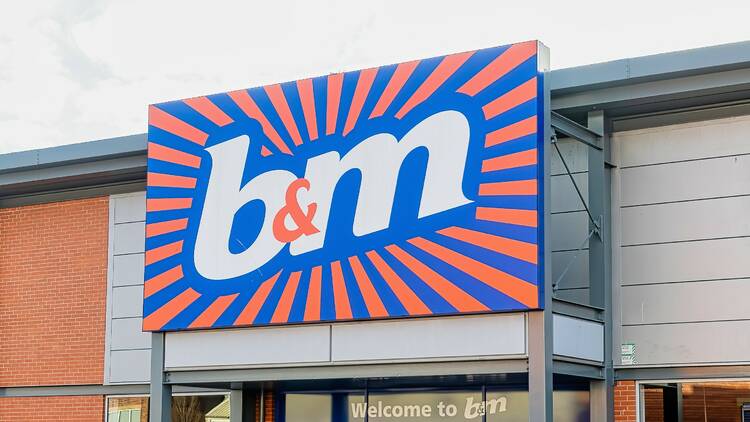Got a used HP Probook laptop. Just needs a new drive. HP specs say it has an m.2 2280 slot. So that’s what I ordered. Guess I needed to look closer.
edit: Thanks for all the info, guys. Different types of keys are explained here. Gonna have to look for a sketchy no-name brand.
The port is a B key m.2, while the ssd is an M key m.2
B keys are used in SATA m.2 ssds, while M keys are pcie nvme m.2 ssds. You bought an nvme m.2 ssd, but needed a sata m.2 ssd.
(You can tell by how there are 28 pins on that side of the port, and 29 on the ssd. That matches b and m keys, respectively)
I literally ran into this myself recently replacing the SSD inside an old Chromebox.
I was literally unaware that it was an entirely different spec based on keying.
Further, it seems I can’t find any reputable companies that make a SATA M.2 SSD in the 2242 size anymore. I can only find old Western Digitals that are more than double the cost of an equivalent NVMe simply because WD doesn’t actually make SATA M.2s in that size anymore.
The only companies that make them in that size are all weird bogus never-heard-of-them-and-the-reviews-are-terrible.
I literally ran into this
Concussions are serious business. Stay safe.
Here’s more info on the types of keys.
~~I’m going to look for an adapter. ~~sata m.2 ssd
In your case, an adapter wouldn’t really be possible. The other way around maybe would have been, but adapting Sata to pcie just isn’t possible. Your best bet would be to return that ssd and buy a sata m.2 one.
Ok, sketchy no-name brand it is, then. One of these perhaps?
Try looking here

The B+M key took a BM on my heart.
You should see a doctor. That shouldn’t be possible.
I got the laptop free so a sketchy no-name drive is fine for my needs.
You COULD have gotten a 2230 which is smaller, and gotten a 3d printed filler part to fill the space. I did that with one of my laptops because the 2242 is a pain to find.
…do what now?
No diss. I read that slot comment above you and went, “yep, yep, yep, makes sense. Man our standards are often dumb.”
Laughed with joy at your comment, because I totally get how foreign this shit is to so many people. It’s like if I walked up to a building engineer asking how they know that iron beam is safe for another 50 years via their skills and I’d just be like “…do what now?”
Back in the 80s & 90s you had to configure settings like IRQ and bad sectors.
And jumpers and terminators and make sure your SCSI IDs don’t conflict!
SATA is the interface that was mostly used until a few years ago, most people are used to seeing the version using cables (with an L shaped connector at both ends, still seen on 2.5" and 3.5" hard drives) but at some point they started making SATA drives using the m.2 form factor (with a connection similar to the one pictured in the OP) but the m.2 form factor is also used by other interfaces and not all of them are physically the same (the “expansion card” looks similar, the connection can be different), m.2 NVME drives are the ones mostly seen for storage space these days so most people assume that if storage is the m.2 type of will be NVME but sometimes (especially for laptops) it will be SATA that’s required instead (like in OP’s case)
Picture of an m.2 storage drive can be seen here and there’s a keying section that shows the difference between B and M keys: https://en.m.wikipedia.org/wiki/M.2
I still think of SATA as that new technology nobody has yet. I’m still used to IDE.
Don’t forget to put the drive in slave mode if it’s not at the terminal point of the cable.
Umm-mmm, you said what’s now a bad word because - Robert Plant is a liar - words never have two meanings.
They said the b SATA m2 SSD key NVMe AFR actuator clusters the cache in m.2 U.2 mSATA PCIe made a SATA lata gata when she said 2.5" wasn’t big enough but 3.5" was too much and LBA LP MTTR spindles the motor with 28 pins when it lost a pin while bowling for transfer rate cause you failed to defragment your USB-connected PCIe Gen 4 pokemon with AHCI finding IOPs over 9000 so the HDD Teraflopped into the EDSFF pool and RAMmed itself 6 feet under.
/s?
He gets it!
SATA= Slow (Max 6 Gbps) PCIe = Fast (Max > 100 Gbps in theory)
This is the maximum rate from the drive to the motherboard. Many drives are fast enough that SATA works become the bottleneck. With PCIe, the drive can run at its full speed, whatever that may be.

Another thing to watch out for is single-sided vs double-sided. Many laptops have flush mounted m.2 slots that won’t fit an SSD with chips on both sides of the board.
You should definitely cut the edge and then jam it in there and see what happens.
Well incompetentboob, let me tell you. You will short and blow the voltage supply on the motherboard and take that port out of service.
Trying to figure out what’s wrong with the picture, I counted the pins.
But yeah, I guess it’s too wide to fit. Cool :')
The dremel school of IT support
B key vs M key. Laptop likely needs a SATA M.2 using B or B+M keying, you have a PCIe x4 drive with M keying.
M.2 is a form factor, there are different "key"ings for NVME vs SATA M.2
Why do they hate us so?
Electric rocks were a mistake, return to goat herding.
Reading up on HP ProBooks and it seems like they primarily use M2 SATA.EDIT: Wow, trying to find in-depth tech specs on HP laptops is horrible. I know less now than when I started looking.
Story of my past couple months. There are five different products named “g4 dock”, four of which are newer than the G5 dock.
The OLD g4 dock, and then 120W/280W Thunderbolt variants that are either TAA approved or not. One of these four has a 2.5GB Intel NIC. Good luck figuring out which one because they merged the specsheet for all four of them.
This is why I avoid HP laptops (as well as Asus) like plagues.
I avoid HP laptops
… by listening to your physiotherapist and avoiding laptops altogether? Score!
laptops are not real, they can’t hurt me
I agree, but it was free.
The trick with HP anything is to look for the quickspec . It’s stupidly the most detailed doc they produce
Because they love to change the URLs of their website every year. For an old product everything a search engine gives you is an error 404.
You need the service manual, and in the service manual there’s all the detailed specs and variants and exact product numbers of supported components
Because they love to change the URLs of their website every year.
One of the universal truths is that a drunk sailor with a fistful of money could simply not buy anything on the HP site before he sobered up. That site is the hallmark of super-bad site design, and always has been.
I know the feeling. I logged into HP hoping to look up the serial number. All it would tell me is that the warranty is expired.
possily running into b vs m key situation. if you have a laptop that was made during the transition period of sata based m.2 to pci-e based ones, knowing which key you needed is important.
What’s wrong with it?
Look at the right side of the photo. The pins don’t line up and the plastic extends longer than the slot opening.
One pin too many, the slot is not wide enough.
I’m confused, that looks like an m.2 slot, and it’s not like it could really be anything else. Msata is a dead standard and looks quite different. The slot would be too wide.
The difference in keys is explained here.
Whoa I had no idea about this. Just put an m2 nvme in my refurbished 2017 HP elitedesk and didn’t even know to check for sata vs nvme. I thought they were all nvme.
There were only really a few years where m.2 sata was relevant.
Nowadays the only time I buy an m.2 sata drive is to put into some sort of adapter.
here.
That link gave me a migraine, I swear.
Please look at the following picture
That indeed looks like an M.2
What is so infuriating about that?
It doesn’t fit
Turns out there are different types of M.2 keys.
Huh, never knew this, guess I lucked out that I bought a correct M2 for my PC.











